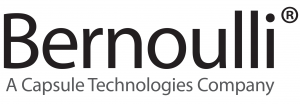Cardiopulmonary Corp: FDA Final Rule – Active Patient Monitoring or Medical Device Alarm Management requires more than an MDDS
MILFORD, Connecticut, March 24, 2011 — Cardiopulmonary Corp. (CPC) supports the Food and Drug Administration (FDA) for issuing regulatory requirements in the healthcare information technology space governing medical device connectivity for documentation to an electronic medical record (EMR). The recent announcement of the Medical Device Data System (MDDS) Final Rule provides necessary clarification regarding the critical difference between the handling of medical device data for documentation and the handling of medical device data for active patient monitoring and alarm propagation. The FDA indicated in its February 14, 2011 press release, which Final Rule is published in the Code of Federal Regulations 21 Part 880, Docket No. FDA-2008-N-0106, that MDDS classified devices are intended only to transfer, store, convert from one format to another according to preset specifications, or to display medical device data. MDDSs are intended to perform all functions without controlling or altering the function or parameters of any connected medical devices. Further, the Final Rule stipulates that MDDSs are not intended to be used in connection with active patient monitoring or alarms. Any medical device data system that facilitates clinical assessments or monitoring, or is intended for use beyond permitted uses under the ruling, such as alarm or alert functionality based on preset clinical parameters (including low priority physiological conditions), is not an MDDS.
CPC’s philosophy has always been to ensure that its Bernoulli® software is fully cleared by the FDA as a medical device under Class II for the intended use of active patient monitoring, and not just limited to data transfers to an EMR. To meet best practice standards, CPC maintains FDA classification for its software equivalent to the medical devices that are being integrated into clinical applications that depend on real-time data delivery and alarm annunciation. CPC, an industry participant in the drafting of this new rule, is committed to maintaining a high acuity Class II clearance and medical device designation for all of its software as well as the quality system and validation requisite to support the classification. CPC provides a software and hardware foundation that enables active patient monitoring that goes beyond documentation and supplies mission critical real-time clinical applications with surveillance, alarms and analytics necessary for patient safety.
An MDDS is precluded from use in active patient monitoring.
The Final Rule requires MDDS solutions to carry an FDA Class I status (general controls). The Final Rule also differentiates requirements for vendors who maintain an FDA Class II (special controls) clearance for an intended use for documentation only from the stricter requirements for vendors whose solutions are intended for use in active patient monitoring. Further, implementation of an MDDS, or an FDA class II cleared solution for documentation only, beyond intended uses stipulated by the Final Rule, shifts the burden for oversight and compliance onto hospitals that will subsequently be classified as a manufacturer. Hospitals will be subject to applicable device regulations, including registration, listing and Quality System regulation. Likewise, if a user reconfigures any other product into an MDDS for such purposes, that user would also be a device manufacturer subject to applicable regulations.
For media inquiries,call:
(203) 877-1999
Bernoullisales@cardiopulmonarycorp.com


